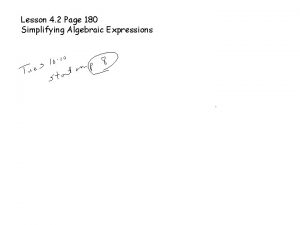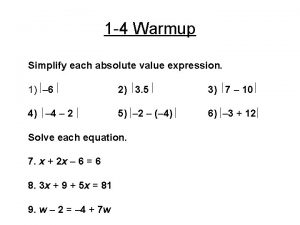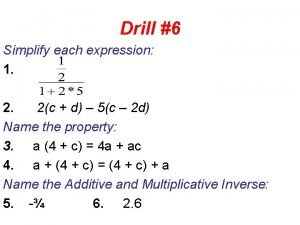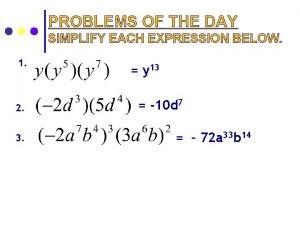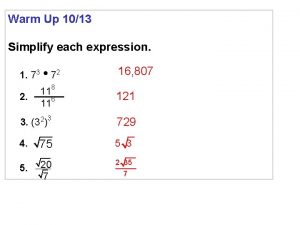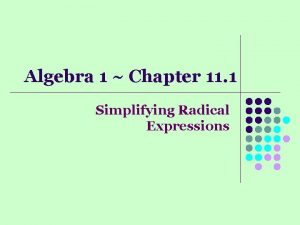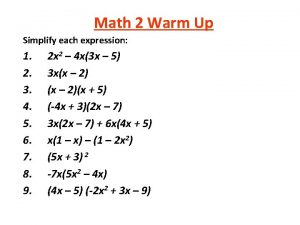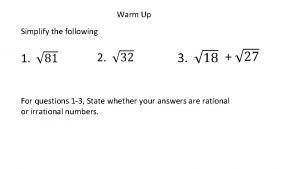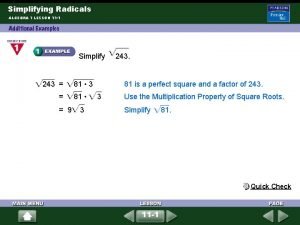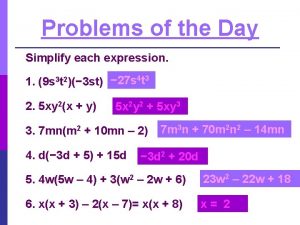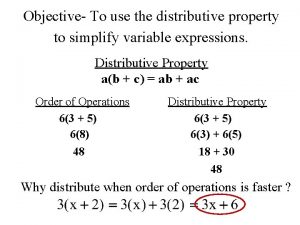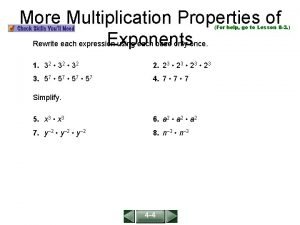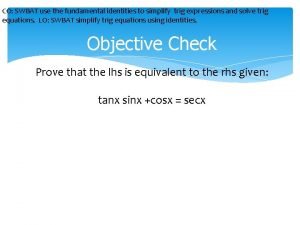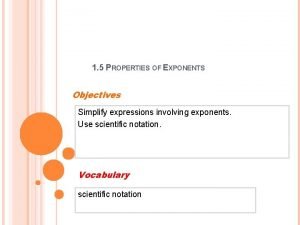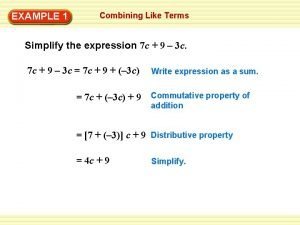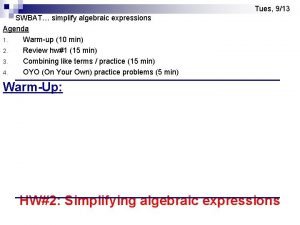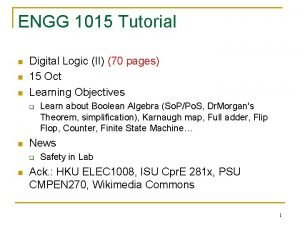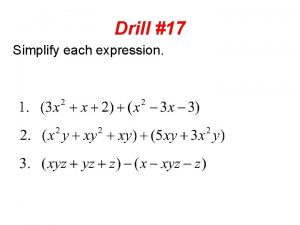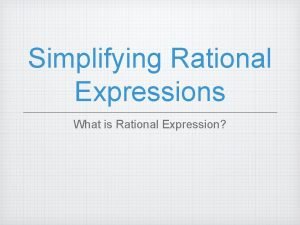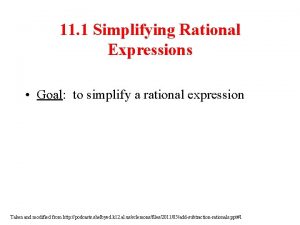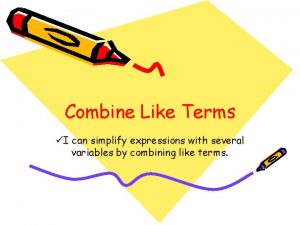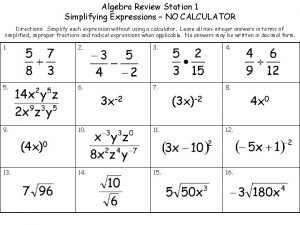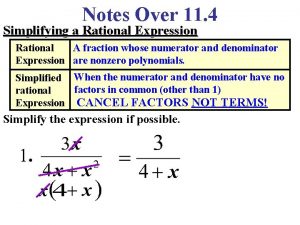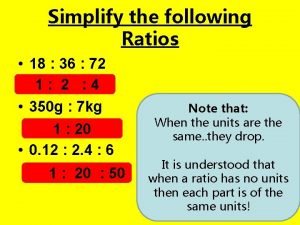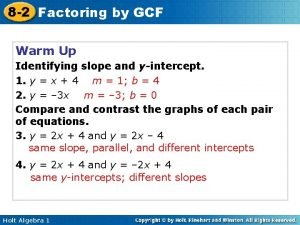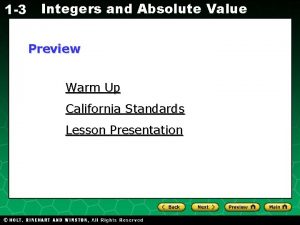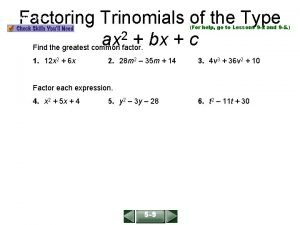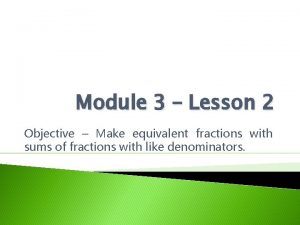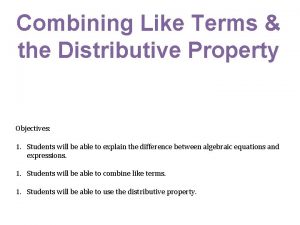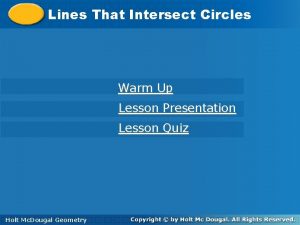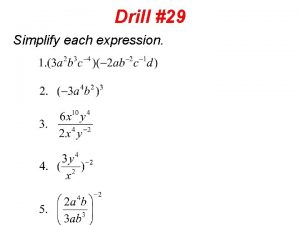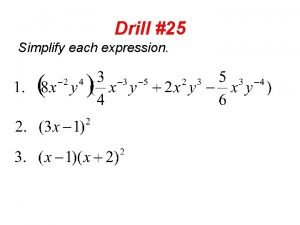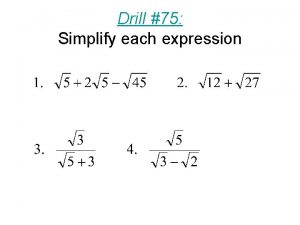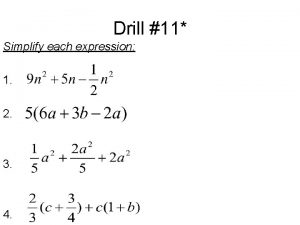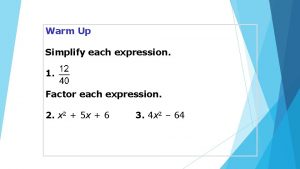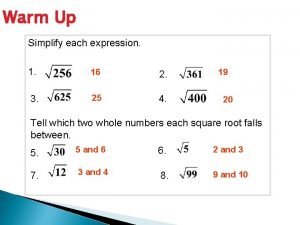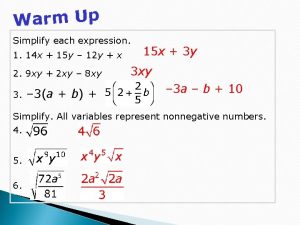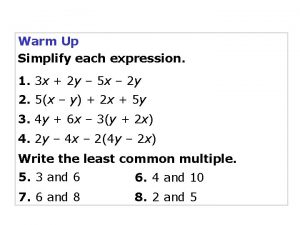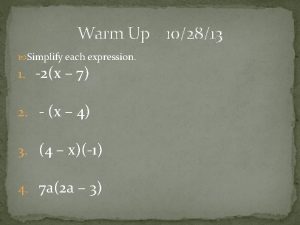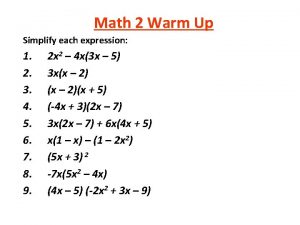Drill 17 Simplify each expression Drill 18 Simplify








































- Slides: 40

Drill #17 Simplify each expression.

Drill #18 Simplify each expression.

Drill #19 Simplify each expression.

Drill #20 Simplify each expression.

Drill #21 Simplify each expression.

Drill #22 Simplify each expression.

Drill #23 Simplify each expression.

Drill #24 Simplify each expression.

Drill #18 Simplify each expression. State the degree and coefficient of each simplified expression:

6 -1 Operations With Polynomials Objective: To multiply and divide monomials, to multiply polynomials, and to add and subtract polynomial expressions.

Negative Exponents * For any real number a and integer n, Examples:

Example: Negative Exponent *

Product of Powers * For any real number a and integers m and n, Examples:

Example: Product of Powers*

Quotient of Powers * For any real number a and integers m and n, Examples:

Example: Power of a Power*

Power of a Power* If m and n are integers and a and b are real numbers: Example:

Example: Power of a Power*

Power of a Product* If m and n are integers and a and b are real numbers: Example:

Example: Power of a Product*

Power Examples* Ex 1: Ex 2: Ex 3:

Find the value of r that makes each statement true:

Find the value of r * Find the value of r that makes each statement true:

Monomials* Definition: An expression that is 1) a number, 2) a variable, or 3) the product of one or more numbers or variables. Constant: Monomial that contains no variables. Coefficients: The numerical factor of a monomial Degree: The degree of a monomial is the sum of the exponents of its variables.

State the degree and coefficient * Examples:

Polynomial* Definition: A monomial, or a sum (or difference) of monomials. Terms: The monomials that make up a polynomial Binomial: A polynomial with 2 unlike terms. Trinomial: A polynomial with 3 unlike terms Note: The degree of a polynomial is the degree of the monomial with the greatest degree.

Polynomials Determine whether each of the following is a trinomial or binomial…then state the degree:

Like Terms* Definition: Monomials that are the same (the same variables to the same power) and differ only in their coefficients. Examples:

Adding Polynomials* To add like terms add the coefficients of both terms together Examples

To combine like terms To add like terms add the coefficients of both terms together Example

Subtracting Polynomials* To subtract polynomials, first distribute the negative sign to each term in the polynomial you are subtracting. Then follow the rules for adding polynomials. EXAMPLE:

Multiplying a Polynomial by a Monomial* To multiply a polynomial by a monomial: 1. Distribute the monomial to each term in the polynomial. 2. Simplify each term using the rules for monomial multiplication.

FOIL* Definition: The product of two binomials is the sum of the products of the F the first terms O the outside terms I the inside terms L the last terms F O I L (a + b) (c + d) = ac + ad + bc + bd

The Distributive Method for Multiplying Polynomials* Definition: Two multiply two binomials, multiply the first polynomial by each term of the second. (a + b) (c + d) = c ( a + b ) + d ( a + b )

Examples: Binomials

The FOIL Method (for multiplying Polynomials)* Definition: Two multiply two polynomials, distribute each term in the 1 st polynomial to each term in the second. (a + b) (c + d + e) = (ac + ad + ae) + (bc + bd + be)

The Distributive Method for Multiplying Polynomials* Definition: Two multiply two polynomials, multiply the first polynomial by each term of the second. (a + b) (c + d + e) = c ( a + b ) + d ( a + b ) +e(a+b)

Examples: Binomials x Trinomials

Classwork: Binomials x Trinomials

Pascals Triangle (for expanding polynomials) 1 2 1 1 5 3 1 3 4 6 4 10 10 1 1 5 1
 Lesson 4 work with algebraic expressions
Lesson 4 work with algebraic expressions Simplify each expression by combining like terms
Simplify each expression by combining like terms Simplify each absolute value expression
Simplify each absolute value expression Simplify each expression.
Simplify each expression. Simplify the expression below
Simplify the expression below Simplify each expression.
Simplify each expression. Simplify each radical expression
Simplify each radical expression Simplify each expression
Simplify each expression For questions 1–2, simplify each expression.
For questions 1–2, simplify each expression. Practice 11-1 simplifying radicals
Practice 11-1 simplifying radicals Simplify each expression
Simplify each expression Simplify each expression
Simplify each expression Simplify each expression using the distributive property
Simplify each expression using the distributive property Rewrite each expression with rational exponents.
Rewrite each expression with rational exponents. Use the fundamental identities to simplify the expression
Use the fundamental identities to simplify the expression 1/ 5 as a decimal
1/ 5 as a decimal What is a constant
What is a constant Simplify the following trigonometric expression
Simplify the following trigonometric expression Simplify the expression
Simplify the expression Use the distributive property to simplify the expression
Use the distributive property to simplify the expression Simplify the following expression using k-map
Simplify the following expression using k-map Simplify the expression.
Simplify the expression. Simplyfying rational expressions
Simplyfying rational expressions Simplify the expression
Simplify the expression Simplify rational expression
Simplify rational expression Simplify the expression by combining like terms
Simplify the expression by combining like terms Simplifying algebraic expressions calculator
Simplifying algebraic expressions calculator Simplify the expression where possible.
Simplify the expression where possible. K map
K map Quadratic equation
Quadratic equation What is 18/36 simplified
What is 18/36 simplified 8-2 factoring by gcf
8-2 factoring by gcf Evaluate each expression integers
Evaluate each expression integers Factor each expression
Factor each expression Factor each expression
Factor each expression State the excluded values for each rational expression
State the excluded values for each rational expression Phrasal verbs choose the correct preposition
Phrasal verbs choose the correct preposition Special cases of factoring
Special cases of factoring Show each expression on a number line. solve
Show each expression on a number line. solve Rewrite each expression by combining like terms
Rewrite each expression by combining like terms Identify each line or segment that intersects each circle
Identify each line or segment that intersects each circle
